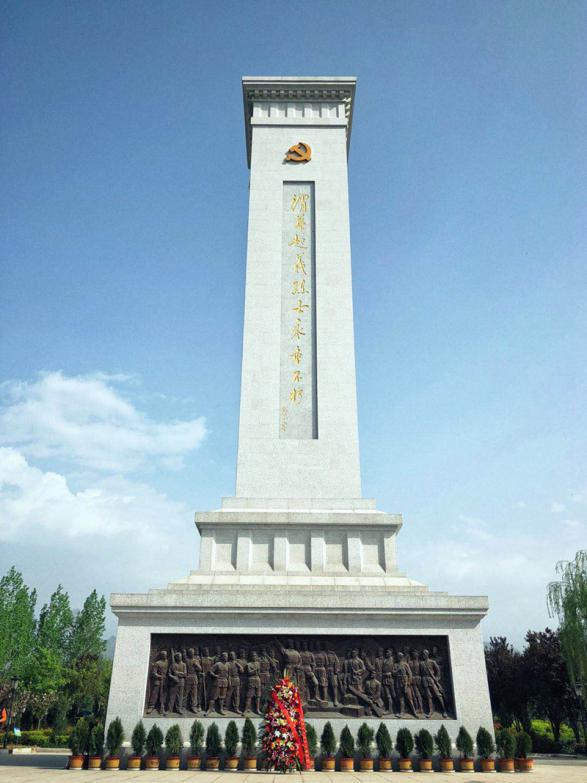The far-reaching but little-known armed uprising in Shaanxi ushered in its 90th anniversary.

Cctv news(Reporter Wang Jiazhu) In April, spring is just right. On a garden in Huazhou District, Weinan City, Shaanxi Province, a towering monument is solemn in the warm sunshine. On the front of the monument are ten golden characters inscribed by Comrade Deng Xiaoping: "The martyrs of the Weihua Uprising are immortal". Weihua Uprising, a heroic past 90 years ago.
In May, 1928, under the leadership of the Shaanxi Provincial Committee of the Communist Party of China and the Shaanxi East Special Committee of the Communist Party of China, Wei Hua armed farmers and the Northwest Revolutionary Army of Workers and Peasants led by communist party launched a large-scale armed uprising in Wei Hua area that shocked the northwest. Although the uprising ended in failure, it had a profound impact on the China revolution. However, compared with Nanchang Uprising and Autumn Harvest Uprising, Weihua Uprising is not well known by most people.
2018 is the 90th anniversary of Weihua Uprising. On April 1st, the interview group of "The Journey of Chinese Civilization" came to the memorial hall of Weihua Uprising and presented a flower basket to the memorial tower in memory of the martyrs. Professor Yuan Wuzhen, Dean of the School of Marxism of Xi ‘an University of Posts and Telecommunications, said that the great significance of commemorating the Weihua Uprising lies in inheriting the red gene, drawing forward strength, and keeping in mind the mission, Do not forget your initiative mind.
In 1927, Chiang Kai-shek launched the "April 12th" counter-revolutionary coup, and under blood shed, the Communist Party of China (CPC) held the "August 7th Meeting", which determined the general policy of agrarian revolution and armed resistance to the massacre of Kuomintang reactionaries. According to the instructions of the Shaanxi Provincial Party Committee and the spirit of the "August 7th Conference", the party organizations in Weihua area took a series of struggle actions in combination with local conditions, which caused great panic among the reactionary authorities. At the end of February 1928, the Xuanhua Incident broke out in Weinan, and the local reactionary authorities arrested more than 40 members of the Communist Party of China party member and the Communist Youth League under an excuse. This incident became the fuse for the outbreak of Weihua Uprising.
On May 1st, at the mass rally held in Chongningyuan, Weinan, the Weihua Uprising led by Liu Zhidan, Tang Shu and others officially started. They combined the peasant armed forces with the revolutionary army to form a red separatist region of 200 square kilometers in Fiona Fang, and gave birth to the Northwest Revolutionary Army of Workers and Peasants. During the Wei Hua Uprising, hundreds of workers and peasants revolutionary soldiers and Red Guards died heroically. In the end, because the enemy was outnumbered and the troops were too different, the uprising troops were forced to move and the uprising ended in failure.
Comrade Xi Zhongxun wrote an inscription for the Weihua Uprising: "The revolutionary spirit of the Weihua Uprising will shine forever", and commented that the Uprising was "another big riot of our Party after the riots in Nanchang, Autumn Harvest and Guangzhou".
Professor Yuan Wuzhen introduced that the Weihua Uprising was the largest armed uprising led by our party in the north during the Agrarian Revolutionary War, which created a new form of combining the mass armed struggle with the revolutionary army to implement armed separatism, carried out a great exploration of establishing Soviet political power, and accumulated valuable experience for creating the Shaanxi-Gansu revolutionary base area.
In addition, the Weihua Uprising also trained a number of revolutionary backbones and leaders such as Liu Zhidan and Xie Zichang for our party. Hao Baoquan, vice president of the School of Marxism at Northwestern Polytechnical University, said that the Weihua Uprising made revolutionary preparations for the northwest revolutionary base area to become the rear area of the Chinese Communist Party leading the national revolution during Yan ‘an period.